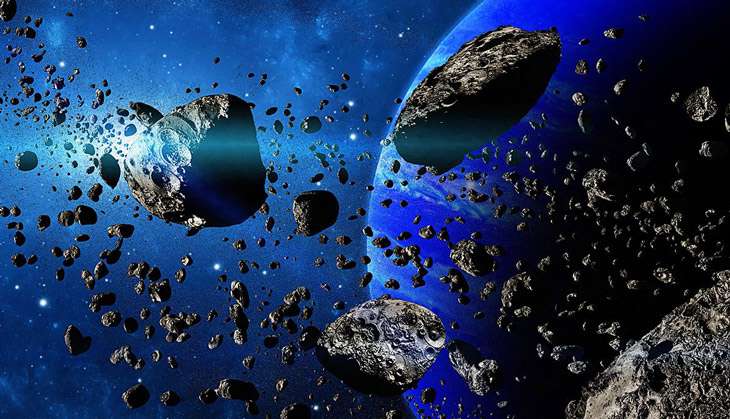Asteroids may play key role in spreading life: Study
A bacteria-carrying asteroid ejected from the centre of the galaxy into the far reaches of space may be "captured" by a distant solar system, potentially bringing life to a new world, scientists say.
The study makes the most comprehensive calculation ever of the likelihood of that process -- known as "panspermia" -- occurring in the Milky Way.
Calculations showed there may be as many as 10 trillion asteroid-sized objects carrying life, according to Idan Ginsburg, a postdoctoral scholar at the Harvard University in the US.
The work also suggested there may be as many as 100 million objects the size of Saturn's moon Enceladus, which is about 500 kilometers in diameter, and as many as 1,000 Earth-sized objects also carrying life or prebiotic material.
"We are not the first to have discussed this, but we are the first to really look into this at such a level of detail," Ginsburg said.
"Other researchers have mentioned the possibility of galactic panspermia, but when we did the calculations we got these very large values. That suggests that this is not only possible, it's probable," Ginsburg said.
While it may seem unlikely that life -- even the tiniest bacteria -- could survive in the harsh conditions of deep space, Ginsburg said studies have repeatedly shown the opposite.
"The biggest worry people had for a long time with this idea was that UV radiation would just destroy life," he said.
"But it turns out if you're shielded, even just a few inches, by rock or ice, that's enough protection. There are even more complex life forms, like tardigrades, that can survive in space -- they simply go into hibernation.
"So we know that microbes on a planet can survive being ejected into space; they can survive in space and, in theory, survive re-entry to be transplanted from one planet to another," Ginsburg said.
To understand how the process might occur, researchers began by looking at the centre of the galaxy.
"Our solar system is fairly stable, but there are other places -- especially in the centre of the galaxy -- where things are much more dynamic, and objects can be and do get kicked out all the time," Ginsburg said.
"Planets, planetesimals, comets, moons, asteroids -- all should be plentiful in the galactic centre, so the galactic centre can act like a dandelion and seed these objects out to the rest of the galaxy," he said.
That process, Ginsburg said, is driven by the gravity slingshot effect produced by the super-massive black hole at the centre of the galaxy.
"With a black hole you can easily accelerate things to anywhere from 1,000 to over 10,000 kilometres-per-second," he said.
"That's fast enough to travel across the galaxy, but there is still a chance for an object like that to be captured by a solar system closer to the edge of the galaxy, so it's possible to transfer life across vast distances in a relatively short time," said Ginsburg.
-PTI
Also Read: Researchers develop technique for early, accurate detection of autism in children
- Researchers develop technique for early, accurate detection of autism in children
- Atmosphere of midsize planet revealed for first time: NASA
- Young Indian scientists want Modi govt to take steps to stop 'brain drain', boost research funding
- Gaganyaan: ISRO teams up with Russian company to train Indian astronauts
- Can marijuana be an effective pain killer?

